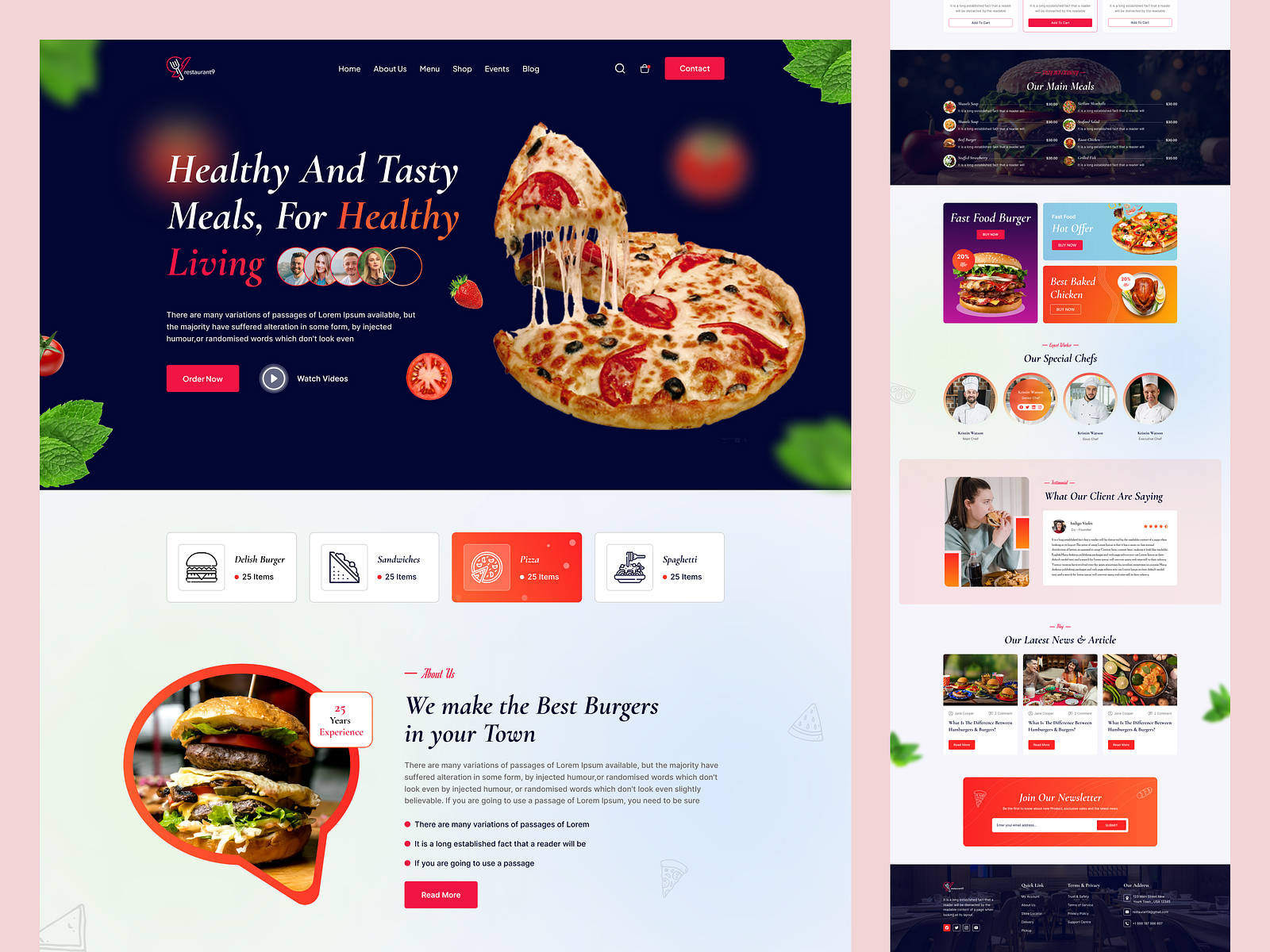The Role of User-Centered Website Design in Increasing Customer Retention
The Role of User-Centered Website Design in Increasing Customer Retention
Blog Article
Important Tips for Crafting High-Impact Website Designs
In the world of digital advertising and marketing, the style of a website offers as a critical touchpoint for engaging prospective customers. To create high-impact website styles, one need to think about crucial elements such as audience understanding, individual experience, and aesthetic pecking order.
Understand Your Target Market

To successfully understand your target market, start by performing group evaluations to gather information on age, sex, place, and rate of interests - website design. This info functions as a structure for developing individual characters, which represent the essential attributes of your target audience. These personas guide decision-making in layout components and material technique, making sure placement with individual expectations
Additionally, examining customer behavior via devices like Google Analytics can reveal how site visitors engage with your site. Metrics such as bounce prices and time on page can highlight locations that require renovation or adjustment. Individual studies and feedback also provide invaluable understandings into choices and pain points.
Inevitably, a deep understanding of your audience is not merely beneficial however necessary. It encourages developers to create even more relevant, enticing, and functional internet sites that promote a favorable customer experience and drive preferred end results.
Prioritize User Experience
When making a site, prioritizing individual experience (UX) is extremely important to attaining both customer complete satisfaction and service purposes. A well-crafted UX ensures that visitors can navigate the site easily, find the information they need, and involve with content efficiently. To accomplish this, it is important to adopt a user-centered layout approach that involves understanding user needs, preferences, and actions.
Beginning by carrying out detailed study, consisting of user studies and usability screening, to collect understandings right into just how users engage with your site. This data should notify style decisions, ensuring that formats and functions align with individual expectations. Structured navigating is vital; site visitors must be able to locate information quickly without unnecessary clicks or confusion.
In addition, think about the loading speed of your web site. A slow-loading website can bring about high bounce prices, negatively influencing customer experience. Optimize scripts and pictures to boost performance.
Lastly, make certain that your web site comes to all users, including those with impairments. Abiding by accessibility requirements not only widens your audience but also promotes inclusivity. By prioritizing UX, you lay the foundation for a successful website that satisfies both customer needs and organization goals.
Embrace Visual Power Structure
A well-structured visual pecking order plays a significant duty in enhancing individual experience by assisting visitors' focus to the most vital aspects of a site (website design). By strategically preparing content, developers can produce a clear path for customers to follow, guaranteeing they involve with vital info properly
To carry out visual pecking order, begin by using dimension and scale. Bigger elements normally draw the eye, making them excellent for headlines or phones call to activity. Enhance this with contrasting shades that highlight essential locations, as vivid colors can develop prime focus that capture focus.
Furthermore, the placement of elements on the page is critical. Leading the customer's stare via the layout can be accomplished by placing important information at the top or in the facility, where users usually begin their aesthetic trip. Including whitespace around elements can additionally boost clearness, making it much easier for customers to process details without really feeling bewildered.
Last but not least, utilizing typography successfully contributes to visual hierarchy. Various typeface weights, dimensions, and styles can denote importance, leading individuals with the material seamlessly. By welcoming these concepts, designers can develop an user-friendly experience that cultivates engagement and motivates individuals to explore further.
Maximize for Mobile
Mobile optimization is essential in today's electronic landscape, as a significant part of web traffic comes from smart phones. To ensure a smooth user experience, sites have to be developed with mobile individuals in mind. This involves employing receptive website design strategies that adapt the design, images, and message to fit various display sizes while keeping functionality and aesthetics.

Touch targets, such as links and buttons, have to be properly sized, guaranteeing they are quickly tappable without mistakes. Make certain that kinds are mobile-friendly by decreasing input areas and using dropdowns where appropriate, simplifying the individual experience.
Finally, examination your site across various mobile phones and web browsers to recognize any type of concerns that may influence use. By focusing on mobile optimization, you not just improve user fulfillment but also positively affect your site's search engine ranking, therefore bring in even more visitors and enhancing overall interaction.
Implement Strong Branding
Creating a natural and identifiable brand is basic to developing a strong on the internet visibility. A well-defined brand not just separates you from rivals however additionally cultivates trust and loyalty amongst your target market. To apply strong branding, begin by developing a visit their website clear brand name identification that encapsulates your objective, values, and vision. This identity needs to be mirrored consistently across all digital touchpoints, including your website, social networks, and e-mail interactions.
Visual aspects such as logos, color design, and typography play a critical function in branding. Pick a color palette that resonates with your target market and reflects your brand personality. Ensure that your logo is functional and plainly displayed on your internet site, improving brand recognition.
Material is just as important; your tone of voice should straighten with your brand name identification, whether it's expert, pleasant, or reliable. Engaging narration can better enhance your brand, developing a psychological link with users.
Verdict
To conclude, crafting high-impact internet site designs requires a multifaceted approach that includes recognizing the target market, prioritizing customer experience, and welcoming visual pecking order. Optimization for mobile gadgets remains necessary, along with the execution of solid branding methods. By integrating these aspects, sites can properly involve individuals, assist in smooth navigation, and foster psychological links that improve brand name identification. Ultimately, adherence to these principles contributes to the development of reliable and engaging digital experiences that resonate with target market.
To develop high-impact site designs, one should consider important elements such as target market understanding, customer experience, and aesthetic hierarchy.When making a web site, focusing on individual experience (UX) is extremely important to attaining both individual satisfaction and service purposes.Begin by performing detailed research, consisting of individual surveys and functionality screening, to gather insights right into just how customers connect with your website. To guarantee a smooth user experience, internet sites must be designed with mobile customers in mind.In verdict, crafting high-impact web site designs demands a complex method that encompasses understanding investigate this site the target market, prioritizing customer experience, and embracing visual pecking order.
Report this page